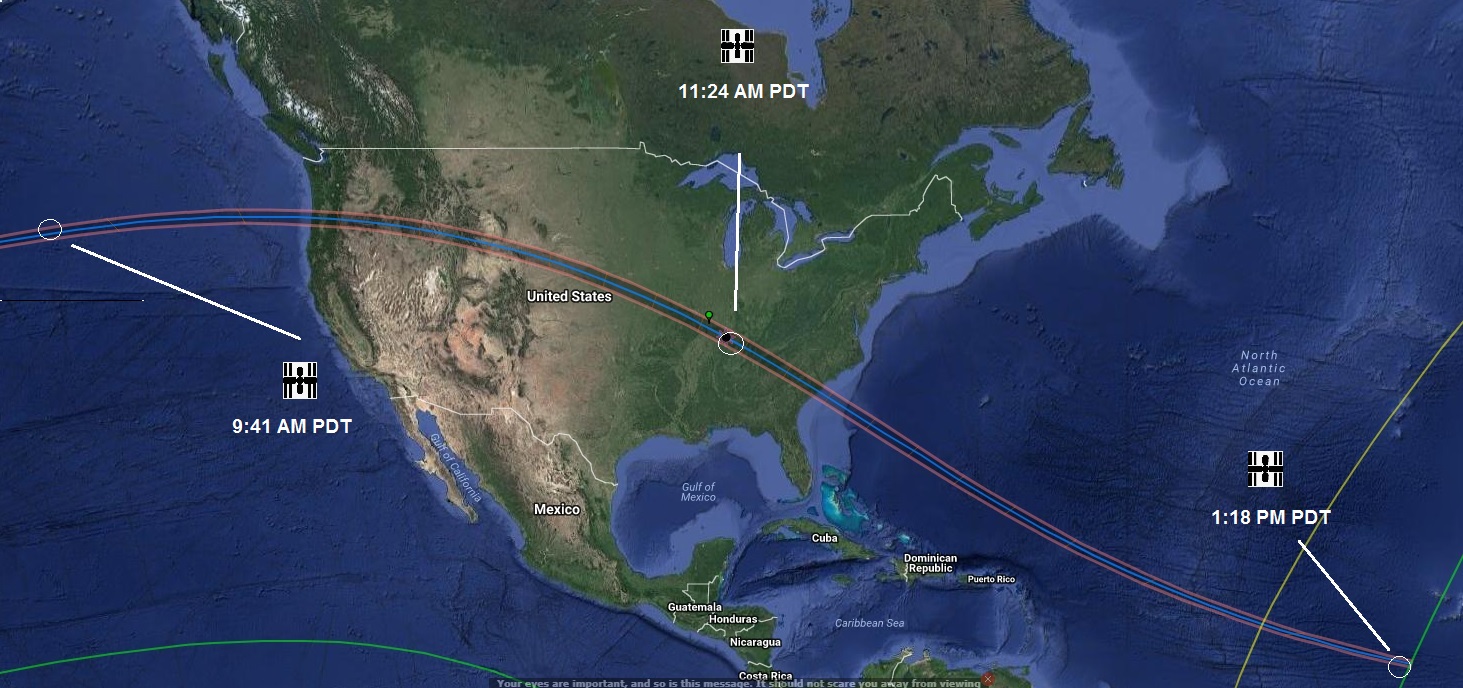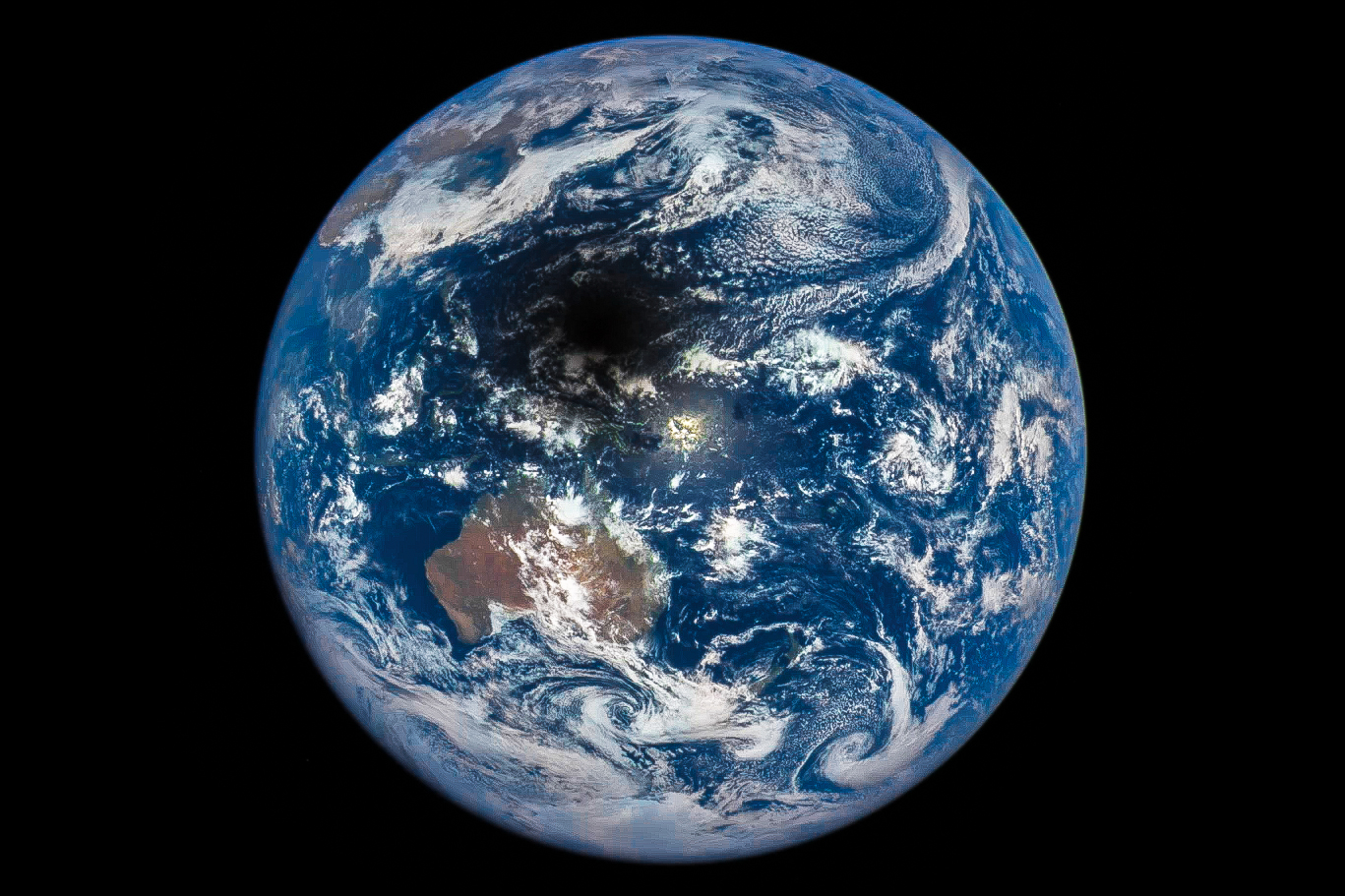Astronauts on the International Space Station will have three chances to see Monday's solar eclipse as the shadow of the moon races across the United States.

Although the total portion of the eclipse will travel coast to coast in about 90 minutes, the partial phase will last for over four hours, giving the ISS three passes over the track. It will be like three different eclipses for them.

The astronauts will only witness partial eclipses. They won't actually look up and see the sun totally eclipsed. That would be an amazing piece of serendipity for the ISS to intercept the moving column of the shadow which is roughly 70 miles in diameter over North America. But they will see the shadow projected on the ground during at least one pass.
The first time they see the eclipse they will be off the coast of southern California and the shadow will still be far off the west coast at 9:41 a.m. The astronauts will see about 37 percent of the sun covered at maximum.
The second time will be with the ISS near Hudson Bay, Canada. This time they will see 44 percent of the sun covered at maximum, and they will actually be able to see the shadow on the ground in the distance -- about a 1,000 miles away. Their view may be similar to this one taken from the ISS during the solar eclipse of May 20, 2012, when the shadow was almost 700 miles away from the station.

And their third eclipse will happen with the ISS thousands of miles off the Atlantic coast. This time 88 percent of the sun will be covered at maximum and they will watch the sun set while it is 27 percent covered. A really unique vantage point.
NASA astronauts will take pictures of the eclipse and relay them to earth. So look for pictures taken from a different perspective than most of us. For all the details visit NASA's website.
Related content

